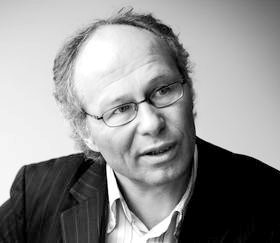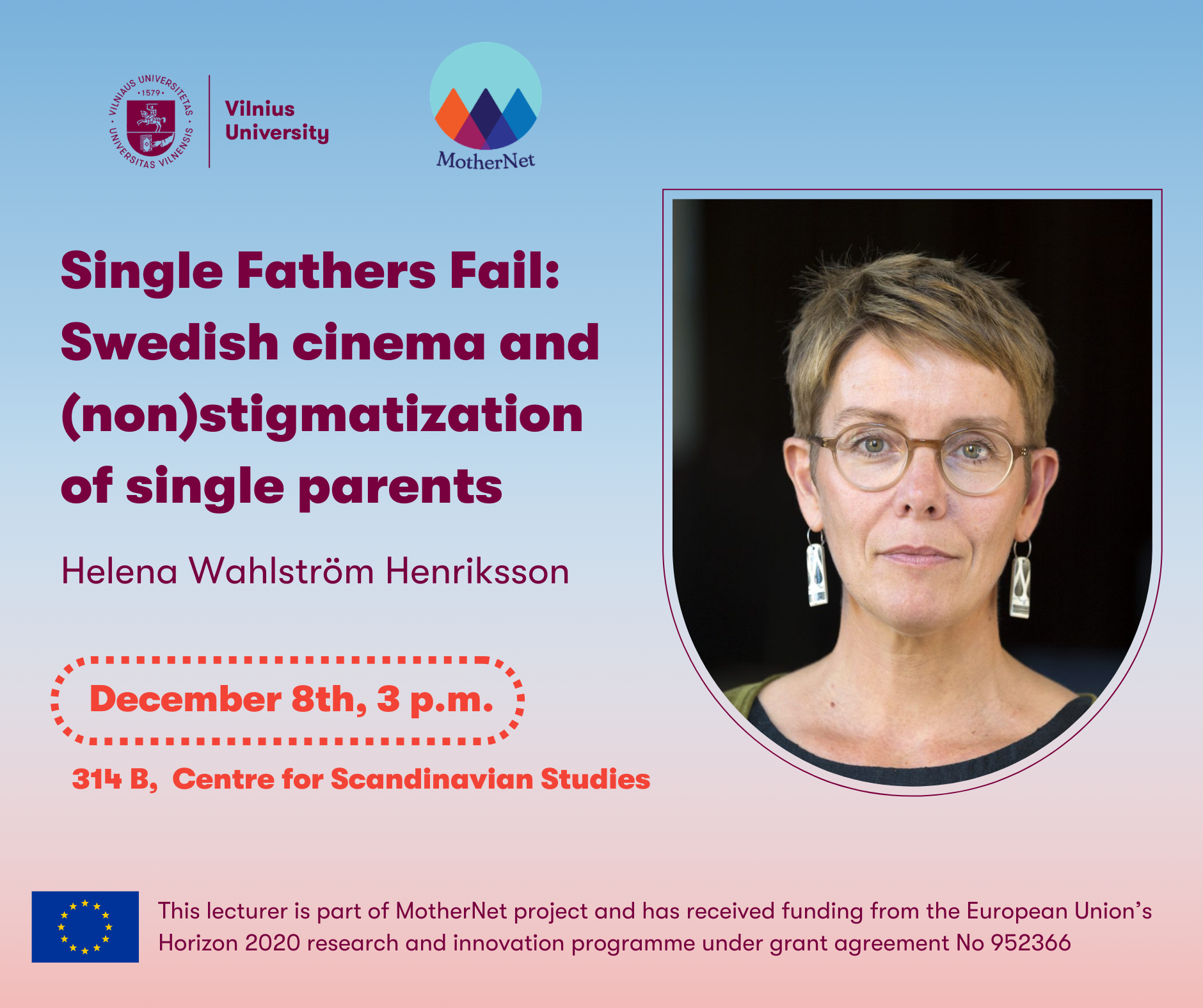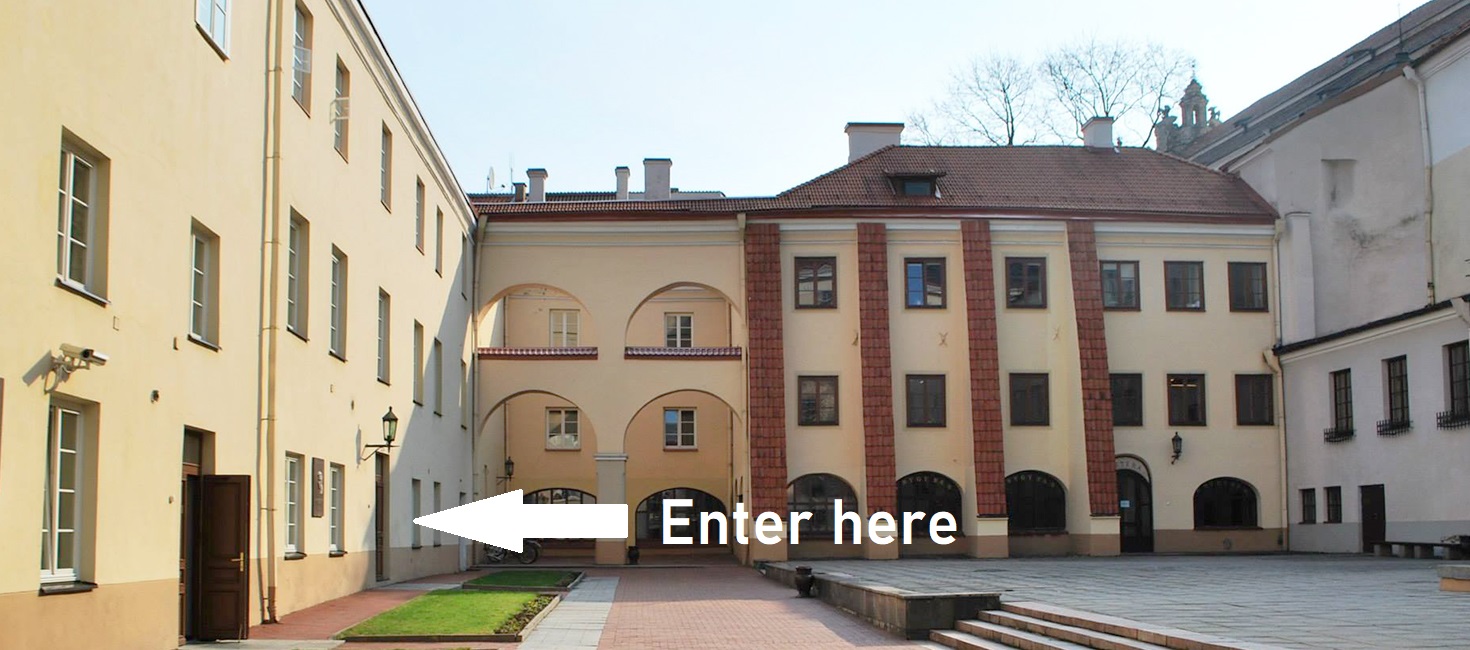Filologijos fakulteto žemėlapis
2024 m. vasario 12 d.
Parsisiųsti (atnaujinto) Filologijos fakulteto žemėlapio PDF >

2024 m. vasario 12 d.
Parsisiųsti (atnaujinto) Filologijos fakulteto žemėlapio PDF >

2024 m. vasario 8 d.
In Memoriam prof. Per Thomas Andersen
(1954.02.08 - 2023.12.13)
Jūratė Kumetaitienė
Skandinavistikos centras
 Tikriausiai neatsiras nei vieno norvegų literatūros specialisto, kuriam nebūtų pažįstamas Per Thomo Anderseno vardas, kuris nebūtų skaitęs jo tekstų ar girdėjęs jo paskaitų. Tai buvo nepaprastai didelis eruditas, o kartu labai empatiškas, subtilus, be galo šiltas ir kuklus žmogus. Norvegų literatūrą profesorius tyrinėjo su didele aistra ir buvo savo srityje nepralenkiamas, stebinančiai produktyvus. Kiekvieną kartą užėjusi į Oslo knygynus nustebdavai, kad literatūros mokslui skirtose lentynose apie aštuoniasdešimt procentų sudaro Per Thomo Anderseno rašytos knygos. Ne veltui Oslo universiteto Rektorius, pernai jam įteikdamas karaliaus apdovanojimą už nuopelnus Norvegijai, pavadino jį savo kartos nestoriumi.
Tikriausiai neatsiras nei vieno norvegų literatūros specialisto, kuriam nebūtų pažįstamas Per Thomo Anderseno vardas, kuris nebūtų skaitęs jo tekstų ar girdėjęs jo paskaitų. Tai buvo nepaprastai didelis eruditas, o kartu labai empatiškas, subtilus, be galo šiltas ir kuklus žmogus. Norvegų literatūrą profesorius tyrinėjo su didele aistra ir buvo savo srityje nepralenkiamas, stebinančiai produktyvus. Kiekvieną kartą užėjusi į Oslo knygynus nustebdavai, kad literatūros mokslui skirtose lentynose apie aštuoniasdešimt procentų sudaro Per Thomo Anderseno rašytos knygos. Ne veltui Oslo universiteto Rektorius, pernai jam įteikdamas karaliaus apdovanojimą už nuopelnus Norvegijai, pavadino jį savo kartos nestoriumi.
Per Thomas gimė Osle 1954 m., ir jei ne sunki liga, šiandien, vasario 8d., jam būtų sukakę 70 metų. Po studijų Oslo universitete 1988 m. jis gavo docento vietą Trømso universitete, kur 1990 m. apgynė antrąją disertaciją (tema: „Dekandansas skandinavų literatūroje 1880–1900“). 1992 m. tapo šio universiteto profesoriumi, o nuo 1993 m. profesoriavo Oslo universitete.
Per Thomas buvo visuomeniškas, aktyvus ir produktyvus mokslininkas, bet taip pat ir puikus pedagogas, mokslo darbų vadovas, turėjęs ypatingą talentą perteikti savo išmanymą ir įkvėpti studentus savarankiškiems tyrimams. Jis parašė daugiau nei 40 knygų įvairiomis temomis ir apie įvairius laikotarpius, per 500 mokslinių straipsnių. Taip pat sudarė dvi grožinės literatūros antologijas ir išleido du romanus – „Laikykis“ (1985; Hold) ir „Žaizda“ (1992; Arr). Vis dėlto pagrindiniu jo gyvenimo veikalu yra monumentalioji „Norvegų literatūros istorija“ (2001; antrasis papildytas leidimas 2012; Norsk litteraturhistorie). Ja nuolat remiasi literatūrologai, studentai, mokytojai, ją žino bene visi, kas domisi norvegų literatūra. Tai unikalus kūrinys, apimantis norvegų literatūros istoriją nuo vikingų epochos iki naujausių laikų.
Daugybė prof. Per Thomo Anderseno pareigų bei apdovanojimų akademinėje bendruomenėje ir už jos ribų liudija, kad jis buvo didžiai vertinamas ir gerbiamas. Jis aktyviai dalyvavo organizacijos „Amnesty International“ veikloje, 1984–1986 m. vadovavo jos skyriui Norvegijoje. 1995 m., būdamas vos 41-erių, buvo išrinktas Norvegijos mokslo akademijos nariu, o paskutiniais gyvenimo metais apdovanotas karaliaus medaliu už akademinius nuopelnus ir grožinę kūrybą.
Ypatingas ryšys siejo Per Thomą su Vilniumi, Vilniaus universitetu ir Skandinavistikos centru. Jis buvo vienas pirmųjų užsienio mokslininkų, atvažiuodavusių čia skaityti paskaitų apie skandinavų literatūrą. Jį galime vadinti Skandinavistikos centro ambasadoriumi Oslo universitete ir plačiau Skandinavijoje, jo dėka Skandinavistikos centras užmezgė reikšmingų akademinių ryšių. Iš visų pasaulio vietų Per Thomas pasirinko būtent Vilnių kaip savo rašymo, kūrybos ir įkvėpimo miestą. Atvažiavęs mėgdavo apsistoti „Radisson“ viešbutyje, ten, kur gyveno pagrindinis norvegų rašytojo Dago Solstado romano personažas Bjornas Hansenas.
Saitai su Vilniumi, Skandinavistikos centro dėstytojais nenutrūko ir siaučiant pandemijai, kai viešą akademinį bendravimą keitė draugiški pašnekesiai zoom’u. Kiekvieną penktadienio vakarą su Per Thomu – jis tuo metu vis studijavo šventąjį Augustiną – ,,susitikdavo" keletas jo buvusių studentų, kiekvienas su savo taure balto vyno. Visus jį pažinojusius jis įkvėpdavo bendrystei, skatino atsiverti literatūrai, menui, muzikai, ypač džiazui. Prasidėjus karui Ukrainoje, Per Thomas iš karto susisiekė su kolegomis Lietuvoje, klausė, ar negalėtų kuo padėti.
Pažinojusieji Per Thomą su šiluma ir dėkingumu prisiminsime jo paskaitas, pokalbius su juo, jo kolegišką paramą ir ypatingą talentą bendrauti. Kaip niekas kitas jis gebėjo kurti atmosferą, kurioje kiekvienas galėjo būti pačiu savimi, be jokios įtampos. Per Thomo tekstai ir jo atminimas liks su mumis, bet jo mums labai trūks.
Skandinavistikos centro kolegos reiškia nuoširdžią užuojautą šviesios atminties profesoriaus Per Thomo Anderseno našlei profesorei Elisabeth Oxfeld, dukrai Sarai ir kitiems artimiesiems.
Nusišypsok jam, Viešpatie...
2023 m. lapkričio 23 d.
Matthew J. Driscoll, Lectures in Vilnius, 5-7 December 2023
5th December 09 00 Venue 314 AB
Icelandic manuscripts and texts: An introduction
My lecture is intended as an introduction to Icelandic manuscripts, intended primarily for people interested in learning how to read Icelandic texts in their original form, that is to say in manuscripts, or in printed editions prepared on the basis of such manuscripts. It will cover the basics of Icelandic manuscript studies, from codicology and palaeography to textual criticism, but its principal aim is to give readers an understanding of manuscripts and manuscript transmission.
Preparatory reading:
Guðvarður Már Gunnlaugsson: “Manuscripts and palaeography”, A companion to Old Norse- Icelandic literature and culture, ed. Rory McTurk (Oxford, 2005), pp. 245-264.
Soffía Guðný Guðmundsdóttir, Laufey Guðnadóttir and Anne Mette Hansen: “Book production in the Middle Ages”, 66 manuscripts from the Arnamagnæan collection, ed. M. J. Driscoll and Svanhildur Óskarsdóttir (Copenhagen, 2015), pp. 211-228.
6th December 15 00 Venue 314 AB
Popular romance in late pre-modern Iceland
Several longer-form, vernacular narrative genres of medieval Icelandic literature can be subsumed under the general heading “romance”. The bulk of these are known as riddarasögur (lit. Sagas of knights) in Icelandic. These are essentially chivalric romances, either 13th-century translations of predominately French romances or younger original Icelandic compositions using some of the same characters, settings and motifs as the translated romances. There about a dozen of the former, most of them translated in Norway but found almost exclusively in Icelandic manuscripts, and between 30 and 40 of the latter. A large number of similar sagas – somewhere around 150 – survive from the post-medieval period, but these have yet to attract much scholarly interest. The fornaldarsögur Norðurlanda (lit. Sagas of ancient times in the lands of the north) are also very much in the romance vein – formulaic, episodic quest narratives with a strong element of the fabulous and a happy ending – but take place in a Viking rather than a chivalric milieu. There are about 35 of these sagas preserved from the medieval period, and roughly an equal number composed after the middle ages. In my lecture I will present this material and discuss its transmission history.
Preparatory reading:
Barnes, Geraldine: “Romance in Iceland”, Old Icelandic literature and society, ed. Margaret Clunies Ross (Cambridge, 2000), pp. 266-286.
Driscoll, Matthew James: “Late prose fiction (lygisögur)”, A companion to Old Norse-Icelandic literature and culture, ed. Rory McTurk (Oxford, 2005), pp. 190-204.
7th of December 13 00 Venue Sp1
The Icelandic rímur
The Icelandic rímur (lit. ‘rhymes’) are uniquely Icelandic, long narrative poems in complex meters, normally comprising several cantos or fits. The number of fits in one rímur cycle could vary from two or three to several dozen. The fits were in turn divided into stanzas, typically numbering between 30 and 100. Around 70 rímur survive from the medieval period, the majority of them anonymous. Rímur remained popular in Iceland until well into the modern age, and in all over a thousand rímur have survived. Rímur were almost invariably based on pre-existing prose narratives. Almost any story could be used, but the majority of rímur are based on romances of one kind or another, typically the mythical heroic sagas (fornaldarsögur) or chivalric romances (riddarasögur). Rímur were intended to be recited aloud, intoned in a manner called “að kveða”, best described as something between singing and speaking. Several hundred rímur melodies have survived into the modern age, many of them clearly of some antiquity. In my lecture I will present the most important features of the rímur and play recorded clips from actual performances.
Preparatory reading:
Hughes, Shaun F.D.: “Late secular poetry”, A companion to Old Norse-Icelandic literature and culture, ed. Rory McTurk (Oxford, 2005), pp. 205-222.
2023 m. lapkričio 20 d.
Abstract
Erik Balling (1924–2005) is one of the most famous Danish film directors of the 20th century. Several generations of viewers recognise him as a connoisseur of the Danish folk soul and a skilled representative of Danish humour. His popular TV series Matador (first broadcast on Danish TV in 1978–81), which tells the story of the lives of two families in a provincial town in the period 1929–47, is today considered a skilful narration of the most important historical and social changes in Denmark up to the end of the forties.
In this seminar, special focus is given to 13 popular comedies about Olsen-banden (The Olsen Gang released in Danish cinemas between 1968 and 1981) that have brought Erik Balling the honour of representing Denmark's transition from a post-war provincial country to a modern one. Welfare, equality, technological development, membership in the European Community and other topics can draw attention in the films as signs of the new times in society. The changes that the director often chooses to look at through the lens of irony.
At the same time, The Olsen Gang is a colourful representation of the paradoxical characteristics of Danes that are relevant to this day. According Christian Monggaard famous Danish film critic Erik Balling lets the Danes look themselves in the eyes and recognise the innate paradoxes they carry as a people and a nation: humility and grandeur, tolerance and self-sufficiency, openness and cunning, self-irony and self-importance (Monggaard 2011).
The talk will take place on November 24th, at 15:00, in Room 402.
2023 m. lapkričio 20 d.
Abstract
Representations of fathers and fatherhood in popular culture contribute to establishing the “ideational – and ideological – centrality of fatherhood” across cultures (Wahlström Henriksson 2020, 323). From a feminist perspective it is crucial to investigate these representations, since they “are part of the social fabric within which understandings of fatherhood take shape (Wahlström Henriksson 2020, 324). Furthermore, since single parenthood is a highly feminized phenomenon, it is important to investigate how “media images and representations intertwine with political and social ideologies” (Gallagher 2014, 27) to convey messages about single fathers.
This chapter explores representations of single fathers in 20th century Swedish fictional film, how gender, class, ethnicity, and age figure in these representations, and how they speak to their contemporary political and ideological context. Premiering between 2013 and 2022, they all have a single father as a central character: Mig Äger ingen (Nobody Owns Me 2013), Min så kallade pappa (My So-called Dad 2014), Yarden (The Dockyard 2016); these films reached wide audiences and also received both critical awards and much media attention. The analysis engages in critical dialogue with international film studies scholarship on (single) fatherhood (Bruzzi 2005; Hamad 2013; Åström 2015; Dole 2021).
Given that lone/single parenthood is “normalized” rather than socially/morally stigmatized in Sweden, and given the ways that Sweden has promoted fathers – including single fathers – as (potential) primary parents in family policy, these films become particularly intriguing due to their predominantly negative construction of single fatherhood as marked by failure and dysfunction. I argue that they offer a counter-discourse to dominant socio-political discourses, and problematize the normative idea that single parenthood is normal and non-stigmatized. But in a political climate increasingly marked by conservatism and nationalism these films are also troubling, for they can be read as feeding into reactionary discourses about family forms and values. Hence, I read the figure of the “failing single father” as one that may question as well as strengthen dominant ideologies.
/HWH
The event will take place on 8th December, 2023, in Room 314.

2023 m. lapkričio 20 d.
Abstract
In the beginning of the 16 th century, Hernando Colón, son of the navigator Christopher Columbus, set out to build a universal library, one which would contain “all the books, in all languages and disciplines, that can be found within Christendom and without”. By the time of his death in 1539, Colón’s library in Seville comprised over 15000 volumes of predominantly printed books, the largest private library in the world at the time. To mange it all, he designed a revolutionary cataloguing system consisting of a number of cross-referenced inventories. All of these survive today in the Biblioteca Colombina in Seville, with the exception of one, the “Libro de los epitomes”, which was meant to contain short summaries of the contents of every book in the library. This had been presumed missing for half a millennium, but was recently identified among the manuscripts in the Arnamagnæan Collection at Copenhagen University, of which it had been a part since the end of the 17th century.
In my presentation I will describe the Libro and its contents and how it relates to the other bibliographical tools developed by Colón. I will also present the research project I lead, funded by the Carlsberg foundation and a private doner, which has as its aim the production of a full transcription of the text of the Libro and a study of its contents.
For more information on the project, see our website: www.bookofbooks.ku.dk
The talk will take place on 7th December, 2023, in Vinco Krėvės room.
2023 m. spalio 1 d.
In Sarbievijus yard (the one with the fountain), enter through the second door on the left and then go up the stairs to the 4th floor.

2023 m. birželio 9 d.
Vilnius universitet
Institutet för Östersjöregionens språk och kulturer
Centret för nordiska studier
Försvarens schema BA 2023
Rum 314